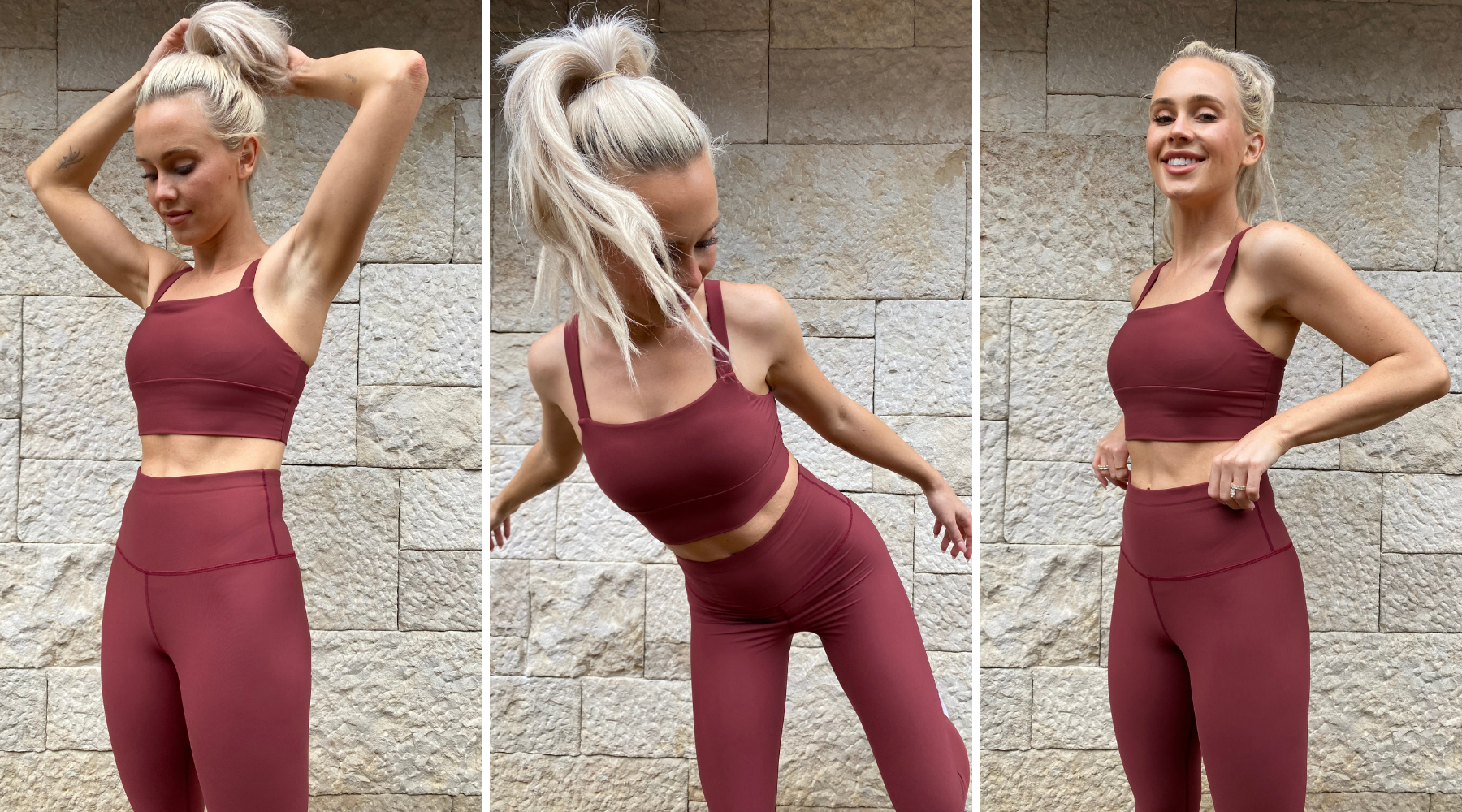
The Impact of Wearing Recycled Fabrics
Sustainable and ethical fashion is on the runway, and this season, recycled textiles are in.
Namely, recycled synthetic fabrics, or those made from plastic, which consists of 69% of all clothing.
This rising trend of recycled textiles is due in part to the Textile Exchange’s Recycled Polyester Challenge.
Now mainstream brands are signing on. Even notorious fast fashion houses like H&M and Old Navy have “committed” to using more recycled materials—lip service or not, time will tell.
Polyester made from recycled plastic bottles, called rPET, is the most common.
The other is nylon, created using recovered ocean plastics, carpeting, and other industrial plastic. The most prominent name in this sphere is ECONYL®.
And it’s making quite the splash in the world of sustainable swimwear, but that’s far from its only fashion statement.
This same regenerated nylon, along with REPREVE 100% recycled plastic bottle nylon, is what’s found in dk active’s Regenerated Nylon collection, meaning it’s equally popular for use in sustainable activewear.
So why the sudden uptick in recycled clothing brands?
Besides the obvious drawbacks of virgin synthetics; the benefits of recycled synthetics, in particular, are twofold.
First, it reduces further demand for global oil production (of which textile production is responsible for 1.35%) and at the same time it upcycles a portion (albeit small but growing) of the enormous tide of plastic waste flooding our planet.
Let’s make like recycled plastic bottles and break down each one.

The Impact of Recycled Synthetic Fabrics on Waste
While often passed over by the likes of organic cotton and hemp fabric, recycled synthetic fabrics have undoubtedly earned their place on the list of sustainable fabrics, if for no other reason than creating something useful out of waste destined for landfill.
Currently, less than 10% of the 300 million tons of plastic produced annually are recycled. Eight million of which is dumped in the ocean.
It’s been predicted that by 2050, there will be more plastic in the ocean than fish.
If only there was some way to take that plastic and make something useful out of it…
Oh, wait, there is!
Recycled synthetics are more durable than most natural fibers and slimy virgin synthetics, particularly ECONYL® which has a higher denier potential than any other synthetic.
Those tights from dk active will last far longer than your average pair, thus reducing further waste.
The Impact of Recycled Synthetic Fabrics on Production
Less demand for oil is no doubt environmentally positive, but it also yields some lesser-considered benefits, like the subsequent decrease in energy consumption.
While the process of converting plastic waste into textiles still consumes energy, it’s altogether less, eliminating the need for drilling, refining, and chemical polymerization.
Recycled polyester uses 33-53% less energy than virgin polyester, as well as significantly less water.
Similarly, every 10,000 tons of ECONYL® prevents 61,500 tons of CO2 emissions, saves 70,000 barrels of crude oil, uses 50% less energy, and reduces the material's global warming potential by 90%.
Chemicals are another consideration.
Again, while caustic sodas and the like are used to clean and break down plastics to be recycled, most of the dangerous compounds are eliminated, like hexamethylenediamine (try pronouncing that!) used in virgin nylon production but not that of ECONYL®.
In fact, ECONYL® is both REACH and OEKO-TEX Standard 100 compliant, i.e. it’s third-party tested and verified free of a host of toxic chemicals.
It’s also made in a closed-loop process, recycling chemicals and water used over and over.
Sans drilling for and processing crude oil, recycling plastic into textiles is less labor-intensive than making them new, eliminating at least some of the potential human rights abuses common in the mining and refining sectors.
Are There Any Downsides to Recycled Textiles?
Between energy consumption and chemical use, recycled fabrics (like any fabrics) aren’t perfect, but the biggest danger is their potential to breed complacency.
As conscious consumers, it’s important we remember that “recycled” is not synonymous with “sustainable”.
If we buy something recycled only to throw it away, we’ve only taken half a step towards a sustainable wardrobe.
It has to be paired with other tenants of slow fashion: durability, timeless designs, small-batch manufacturing that prevents deadstock waste.
And those factors are critical for brands to consider too. Using recycled fabrics in their collections without further change is arguably greenwashing.
It hardly matters if recycled garments are never sold or wear out after one season.

The Future of Recycled Textiles
Speaking of throwing away clothes…
According to the EPA, only about 14.7% of clothing is actually recycled.
While utilizing plastic waste is good and all, synthetic fabrics will need to be recycled from textiles other than plastic bottles.
Especially since it’s predicted that demand for recycled bottles will eventually supersede supply.
Not that we're complaining. This is a very good problem to have, considering there are plenty of recyclable materials available for textile use.
Synthetic materials can also be recycled many times over before being “downgraded” to the point of being structurally unstable.
But the future of recycled fabrics in the fashion industry is dependent on consumers making the effort to recycle their old clothes; and companies making this possible.
While many sustainable clothing brands have implemented garment recycling programs, the textile recycling infrastructure is unfortunately lacking.
The more people who buy recycled alternatives over virgin garments and take advantage of recycling programs that do exist, the more recycled textiles will become part of the fabric of the fashion industry (pun intended).
Final Thoughts on the Impact of Recycled Fabrics
Is the life cycle of recycled fabrics perfect yet?
No, but it’s creating the groundswell for monumental change in the industry.
And it all starts with us consumers using our dollars to vote for what happens next. If we hope to avoid fast fashion, understanding that our purchases do make a difference is critical.
Even choices as small as which sustainable bike shorts you’re going to buy makes a difference.
Recycled fabrics aren’t a silver bullet but they are a crucial step towards fashion circularity.
This article was written by Sustainable Jungle
You can learn more about choosing the right ethical brands for sustainable living on Sustainable Jungle's article here.



